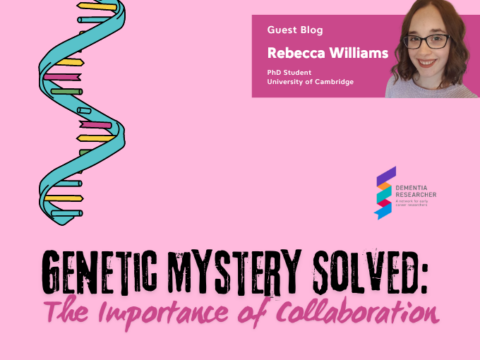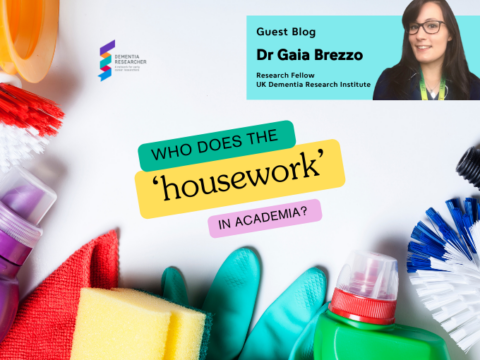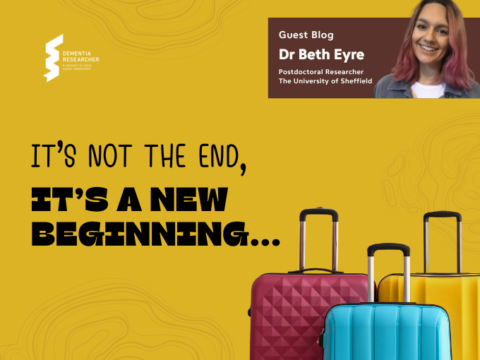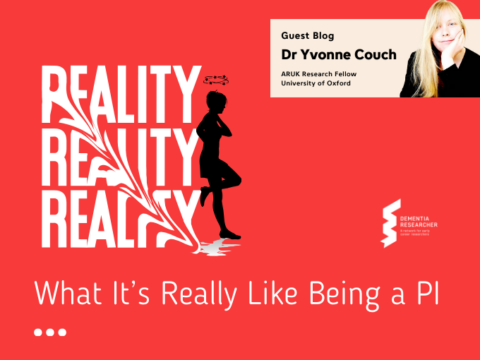Translation of laboratory-based research into clinical practice is one of the fundamental goals of pre-clinical research. Those of us who use animal models to discover new things about how the brain works do so in the knowledge that the main reason is because there are only so many things you can discover from cells in a dish. You will struggle to discover the effect one organ has on another, you might not be able to see how an uninjured bit of tissue reacts to injury, you will struggle to study physiological changes in things like blood flow. On this background, one of our main hopes is that our models represent at least some aspects of the diseases we are studying. Be that the sequence of events that happens after a stroke, or the degenerative processes that occur in neurons in Alzheimer’s disease. But one of the major sticking points we have in pre-clinical research is age, and that’s what we’re going to talk about today.
This piece comes off the back of two grants I’ve been involved in that include the use of aged animals. We’ll get onto why aging animals is important shortly but first I want to highlight something practical. Aging takes time. I know that sounds ridiculous, but it does. If I want a 12-month-old mouse it is actually really hard to just buy one, you have to give the company enough warning so that they can age some, or so they can set aside breeding animals for you. Or you have to be prepared to buy them and age them yourself. Now if I want to study the effects of stroke on the background of an aging brain, I have 12 months at the earliest before I can start any work. Yes, I can compare the aged mice to young mice but if that’s not the point of my project then it seems like a gratuitous use of animals.
So what do I do? It turns out, nobody really knows. And when you ask for money to do a project like this and your answer is basically ‘look….I’ve got about seven other projects I’m sort of working on so I’ll keep those ticking over whilst the mice get older if you guys could just pay my salary’, their answer is often ‘thanks, but no thanks’. We’ve come across a translational roadblock where aging research can only be the province of the already rich, of the established, tenured mega-lab. It is incredibly challenging for someone new to propose a three-year fellowship or three-year project grant to solely study aged animals without them having some form of existing support. And we know from previous articles/rants that larger labs are not necessarily as innovative as smaller labs, so something needs to be done.
But beyond that, the issue of doing aging research in a funding landscape where project grants can be only three years long is also problematic from a results standpoint. If I want to age mice or rats to 18 months before my experiments, and cannot start until my funding starts, then half of it will be over before I even get any results. Then if it doesn’t work, because science often doesn’t, my funding pretty much will be over by the time I get to repeat it.
The bigger picture of how we fund academic, or indeed any, research needs to be addressed because we have an aging population and fundamentally old people and young people are not the same.
Now I’ve made that nice, bold statement let’s get into some of the science of why. We’ll start on a background of stroke, because it’s where I come from, but we’ll talk about dementia as well.
One of the first things that happens after a stroke is oedema, or an accumulation of fluid in and around the area where the stroke occurs. Leakage of blood vessels and general inflammation cause changes in blood brain barrier permeability and increases the movement of water, proteins and cells. This swelling is a normal part of the body’s response to injury but can be increasingly fatal in younger stroke patients when compared to their older counterparts. I overheard a local nurse explaining to a more junior colleague once that this was because young people’s brains have less room around them to swell and this may sometimes be the case, there is some degree of brain volume loss as we age, but what’s more likely to be the explanation is the difference in the inflammatory response as we age.
The term ‘inflammaging’ is relatively recent and has been used to describe what happens to the immune system as we age. It is technically defined as an increase in inflammatory markers in the circulation which occurs as a natural part of the aging process. But, I hear you cry, if you have more inflammatory markers floating around shouldn’t your oedema be worse? Yes, in principle. But what actually happens is that as you age your immune system doesn’t mount a very good defence. Imagine your immune system as an army. When you fill the army with young, keen, 18-year-olds they’re full of self-confidence and they know that when battle comes they’ll be ready to kick proverbial butt. When you fill the army with 75-year-old veterans they know what might be coming so they’re constantly tense and grumbling about the prospect of battle but when it comes to actually fighting they’re not as effective as they used to be.
This means we might have fewer cells turning up to the site of injury but we also might have changes in the brain with age that cause their own set of differences. The blood brain barrier becomes leakier as we age. Whilst this could be considered bad for oedema, letting more stuff in, it’s important to remember the leak is bidirectional, so stuff will also leak back out at a fairly similar rate. At the barrier itself we have a protein called aquaporin-4 which regulates water content and is really important in terms of the formation of oedema. Reducing aquaporin-4 activity can reduce oedema formation and aquaporin-4 expression reduces as we age. Together these changes in barrier function, combined with changes in immune cell mobilization, mean that the older brain almost certainly experiences lower volumes of oedema after a stroke and that the effects are likely to be different.
As well as the cells of the peripheral immune system, cells of the central immune system are likely to be different as we age. Both astrocytes and microglia have been found to have different morphologies as well as different functional reactivities. In fact, microglia in the aged brain tend towards not only being slightly more pro-inflammatory, but they also tend to be more reactive, in contrast to cells of the systemic immune system. If we go back to our army analogy, this time we’ve stocked the army entirely with absolutely ripped Arnold Schwarzenegger-types, rather than regular 75-year-olds. This means the aged-brain is likely to react more strongly to injuries such as stroke, but also to potential antigens like amyloid or tau. Some of these pathogenic hallmarks of aging have been found to be associated with familial early-onset Alzheimer’s. For example, mutations in PSEN result in changes in microglial morphology and function, resulting in an exacerbated inflammatory phenotype in the brain.
And all of these differences have translational impacts. An aquaporin-4 inhibitor in a young, healthy mouse might not have the same impact in an older mouse. A model of Alzheimer’s in a 6-month old mouse might not look the same in a 12-month old mouse. If I want to try a new anti-inflammatory approach, will this even work in an older mouse or will it have the opposite effect? A drug that might not cross the blood brain barrier in a younger mouse might actually be effective in an older animal, where the barrier is leaky. Because of its nature, we have a duty in pre-clinical research to make sure the work we do is meaningful. As such we need to start thinking about how we carry out, and how we fund, research on the background of an aging population. Because time is catching up with all of us.
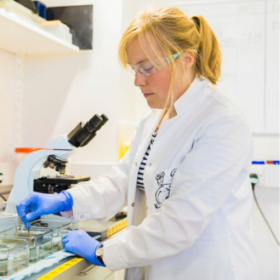
Dr Yvonne Couch
Author
Dr Yvonne Couch is an Alzheimer’s Research UK Fellow at the University of Oxford. Yvonne studies the role of extracellular vesicles and their role in changing the function of the vasculature after stroke, aiming to discover why the prevalence of dementia after stroke is three times higher than the average. It is her passion for problem solving and love of science that drives her, in advancing our knowledge of disease. Yvonne shares her opinions, talks about science and explores different careers topics in her monthly blogs – she does a great job of narrating too.

 Print This Post
Print This Post
